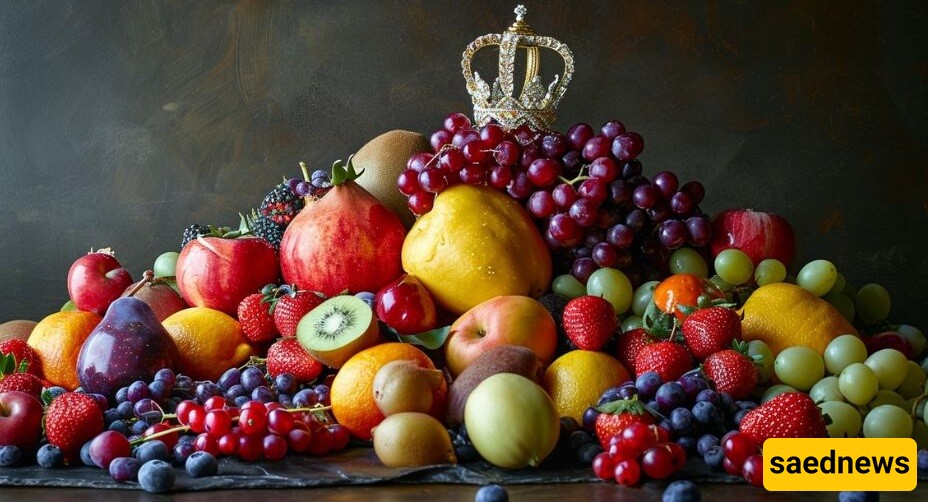SAEDNEWS: Discover the vibrant world of Iranian fruits, their unique flavors, and health benefits that celebrate the rich tapestry of Iran's agricultural heritage!

According to SAEDNEWS, Iran is often celebrated for its rich history, beautiful carpets, and diverse culture, but it’s time to turn the spotlight on something equally delightful—its fruits! This magnificent country, with its varied climates and dedicated farmers, is a hidden gem for fruit lovers. Whether you're a seasoned traveler or just an enthusiast of all things fruity, Iran has something special for you to savor throughout the year.
Imagine strolling through the bustling bazaars of Iran, where vibrant stalls overflow with fresh produce. You’ll find beloved favorites such as refreshing melons and juicy citrus fruits, but you’ll also encounter unique varieties that might just be new to your palate. Let’s take a journey through some must-try Iranian fruits, each with its distinctive flavor and cultural significance.

Let’s start with Iran's national fruit, Anar. The pomegranate, deeply ingrained in Iranian culture and history, offers more than just a delectable taste. With origins dating back thousands of years, this jewel-like fruit symbolizes fertility and abundance in Iranian folklore.
Pomegranates have a tough reddish-orange rind hiding sweet-tart, bright red arils inside. One can enjoy fresh Anar by simply popping the arils into your mouth or incorporating them into various dishes, especially during special celebrations such as Yalda Night. This winter solstice celebration highlights Anar as a traditional treat, reminding everyone of the warmth of summer during the cold winter months.

Moving on to Chaghale Badum, or baby almonds, this delightful fruit is a springtime favorite in Iran. These young almonds are harvested before they reach full maturity, offering a crunchy texture and mild flavor that contrasts with the typical nutty taste of mature almonds.
From late March to May, people enjoy these crunchy delights, often sprinkled with salt for added flavor. Their appeal doesn’t stop there; Chaghale Badum can also be pickled or turned into chutneys, adding a unique twist to dishes.

Next, we have Goje Sabz, or greengage, a tart fruit that graces tables across Iran in springtime. These green, unripe plums are not typically eaten straight but make for a wonderful snack when paired with a sprinkle of salt and crushed mint leaves.
For many Iranians, Goje Sabz is a nostalgic reminder of childhood and family gatherings. They are often found in chutneys and pickled, adding a vibrant flavor to various dishes.

As autumn arrives, Zalzalak comes into season. Known as hawthorn in English, this small, round berry offers a delicious burst of sweet-tart flavor. Rich in antioxidants, Zalzalak has potential health benefits, including heart health and improved blood circulation.
Enjoyed fresh, these bright red berries are often harvested in late September or October, making them a cherished fruit during cooler months.

If you're exploring northern Iran, keep an eye out for Azgil, commonly known as the jungle pear or loquat. This sweet and tart fruit needs to be fully ripe for the best flavor. Often used in pickled dishes, Azgil adds a delightful tang to Iranian meals.

Citrus lovers must try Limoo Shirin, or sweet lemon. Unlike typical sour lemons, this variety is pleasantly sweet and aromatic. It’s visually similar to a Meyer lemon, with a tart but pleasant flavor profile that’s often enjoyed fresh or used to make drinks. However, it’s important to eat it quickly after cutting, as it loses its sweetness quite rapidly.

Toot Sefid, or white mulberry, makes a significant appearance in early summer. This sweet berry is a delightful treat, often enjoyed straight from the tree. Fresh or dried, these berries are a popular snack and a reason for festive gatherings where families harvest them using large pieces of fabric to catch the falling fruit.

Next up is Shah Toot, the royal mulberry that captivates fruit lovers with its large size and luscious flavor. Juicy and sweet, these berries are perfect for enjoying fresh or turning into jams and jellies, adding a unique twist to traditional recipes.

As temperatures rise, nothing beats the refreshing taste of Kharbozeh! Known as Persian melon, its elongated form and sweet, juicy flesh make it a favorite summer snack. Besides being delicious on its own, Kharbozeh can also be blended into smoothies or used to create refreshing desserts.

Finally, we have Khormaloo, or the Persian persimmon. Known for its sweet, succulent taste, this fruit is a treat that should not be missed. Eaten fresh when fully ripe, Khormaloo boasts a delightful flavor reminiscent of dates and plums, making it a great source of vitamins A and C.
Iran is a treasure trove of fruits that go well beyond the everyday varieties. Each fruit carries its tales and traditions, reflecting the country's rich agricultural history. From the exotic flavors of Anar and Chaghale Badum to the sweet and tangy Limoo Shirin, it promises to take your taste buds on an unforgettable journey.
So, the next time you think of Iran, immerse yourself in its fruity bounty. They’re not just delicious—they’re historical, cultural, and packed with health benefits that make every bite worthwhile. And who knows? You might find yourself planning a trip to Iran, eager to experience these fruits fresh from the source!

